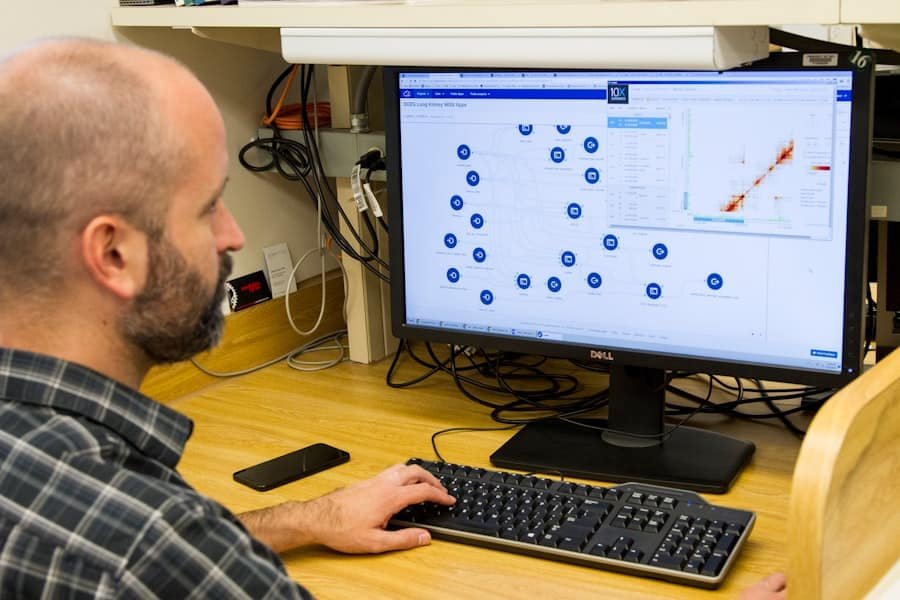Life Cycle Costing (LCC) is a financial assessment methodology that evaluates the total cost of ownership of an asset over its entire life span. This approach encompasses all costs associated with the acquisition, operation, maintenance, and disposal of a product or service. By considering the complete life cycle, LCC provides a more comprehensive understanding of the financial implications of a decision, rather than focusing solely on initial purchase costs.
This holistic view is particularly valuable in sectors where long-term investments are common, such as construction, manufacturing, and infrastructure development. The concept of Life Cycle Costing extends beyond mere financial calculations; it also incorporates factors such as environmental impact and sustainability. By integrating these elements into the cost analysis, organisations can make more informed decisions that align with their strategic goals and corporate social responsibility initiatives.
For instance, when evaluating the life cycle costs of a building, one would consider not only the construction expenses but also energy consumption, maintenance costs, and eventual demolition or recycling costs. This comprehensive approach enables stakeholders to identify potential savings and efficiencies that may not be apparent when examining short-term costs alone.
Summary
- Life Cycle Costing is a method of economic analysis that evaluates the total cost of ownership of a product or asset over its entire life cycle.
- It is important as it helps in making informed decisions about investments, maintenance, and operations, leading to cost savings and improved efficiency.
- The components of Life Cycle Costing include initial costs, operating costs, maintenance costs, and disposal costs.
- The advantages of Life Cycle Costing include better decision-making, improved budgeting, and the ability to identify cost-saving opportunities.
- However, the disadvantages include the complexity of calculations, the need for accurate data, and the potential for unforeseen changes in the life cycle.
Importance of Life Cycle Costing
Environmental Considerations and Economic Viability
In an era where sustainability and environmental considerations are increasingly paramount, LCC serves as a critical tool for organisations aiming to balance economic viability with ecological responsibility. By adopting this methodology, businesses can identify opportunities for cost savings that arise from more efficient resource use and reduced waste generation throughout the asset’s life cycle.
Informed Decision-Making and Strategic Planning
Moreover, Life Cycle Costing plays a pivotal role in strategic planning and decision-making processes. It empowers organisations to evaluate various alternatives based on their total cost implications rather than just initial outlays. For example, when selecting materials for a construction project, LCC can help determine whether investing in higher-quality, more durable materials may lead to lower maintenance and replacement costs over time.
Fostering a Culture of Sustainability
This forward-thinking approach not only enhances financial performance but also fosters a culture of sustainability within organisations, encouraging them to consider the broader impacts of their choices.
Components of Life Cycle Costing

Life Cycle Costing comprises several key components that collectively contribute to a comprehensive understanding of an asset’s total cost. The primary elements include acquisition costs, operational costs, maintenance costs, and disposal costs. Acquisition costs encompass all expenses incurred during the procurement phase, such as purchase price, transportation, installation, and any associated taxes or fees.
Understanding these costs is essential for establishing a baseline for further analysis. Operational costs refer to the ongoing expenses associated with using the asset throughout its life cycle. This includes energy consumption, labour costs, and any consumables required for operation.
Maintenance costs are another critical component; they involve expenditures related to routine upkeep, repairs, and replacements necessary to ensure the asset remains functional and efficient. Finally, disposal costs account for expenses incurred at the end of an asset’s life, including decommissioning, recycling, or landfill fees. By meticulously analysing each of these components, organisations can gain insights into potential areas for cost reduction and efficiency improvements.
Advantages of Life Cycle Costing
One of the primary advantages of Life Cycle Costing is its ability to promote informed decision-making by providing a comprehensive view of costs over time. This long-term perspective enables organisations to identify cost-saving opportunities that may not be immediately apparent when focusing solely on initial purchase prices. For instance, investing in energy-efficient equipment may entail higher upfront costs but can lead to significant savings in operational expenses over its lifespan.
Additionally, LCC encourages organisations to adopt sustainable practices by highlighting the environmental impact of their choices. By considering factors such as energy consumption and waste generation throughout the life cycle of an asset, businesses can make decisions that align with their sustainability goals. This not only enhances their reputation among consumers increasingly concerned about environmental issues but can also lead to regulatory compliance and potential tax benefits associated with sustainable practices.
Disadvantages of Life Cycle Costing
Despite its numerous advantages, Life Cycle Costing is not without its challenges. One significant disadvantage is the complexity involved in accurately estimating all relevant costs over an asset’s entire life span. Gathering data on operational and maintenance expenses can be particularly difficult, especially for long-lived assets where historical data may be sparse or unreliable.
This complexity can lead to inaccuracies in cost projections and ultimately affect decision-making. Another challenge associated with LCC is the potential for bias in the selection of assumptions used during the analysis. Different stakeholders may have varying perspectives on what constitutes relevant costs or how certain factors should be weighted in the overall assessment.
For example, while one department may prioritise initial capital expenditure, another may focus on long-term operational efficiency. This divergence can result in conflicting conclusions about the best course of action, complicating the decision-making process.
Applications of Life Cycle Costing

Life Cycle Costing finds applications across various industries and sectors, demonstrating its versatility as a financial assessment tool. In construction and real estate development, LCC is employed to evaluate different building materials and designs based on their long-term cost implications. For instance, when comparing traditional versus sustainable building practices, LCC can help stakeholders understand the potential savings associated with energy-efficient systems and materials over time.
In manufacturing, LCC is utilised to assess the total cost of production processes and equipment investments. By analysing factors such as maintenance requirements and energy consumption, manufacturers can optimise their operations for both cost efficiency and sustainability. Additionally, in public sector projects such as infrastructure development, LCC aids in evaluating the economic viability of various options while considering long-term impacts on communities and the environment.
Steps involved in Life Cycle Costing
Implementing Life Cycle Costing involves several systematic steps that guide organisations through the process of assessing total ownership costs. The first step is defining the scope of the analysis by identifying the asset or project under consideration and determining its expected life span. This foundational step sets the parameters for subsequent evaluations.
Following this initial phase, organisations must gather data on all relevant costs associated with each stage of the asset’s life cycle. This includes acquisition costs, operational expenses, maintenance requirements, and disposal fees. Once this data is collected, it is essential to analyse and categorise these costs accurately to facilitate meaningful comparisons between alternatives.
The next step involves calculating the total life cycle cost by summing all identified expenses over the asset’s expected life span. This calculation may require discounting future costs to present value to account for inflation and time value of money considerations. Finally, organisations should interpret the results in light of their strategic objectives and make informed decisions based on the insights gained from the LCC analysis.
The Future of Life Cycle Costing
As businesses increasingly recognise the importance of sustainability and long-term financial planning, Life Cycle Costing is poised to play an even more significant role in decision-making processes across various sectors. The growing emphasis on environmental responsibility will likely drive further integration of LCC into corporate strategies as organisations seek to balance profitability with ecological stewardship. Moreover, advancements in technology are expected to enhance the accuracy and efficiency of LCC analyses.
The rise of big data analytics and artificial intelligence will enable organisations to gather and process vast amounts of information related to asset performance and costs more effectively than ever before. As these tools become more accessible, businesses will be better equipped to conduct thorough life cycle assessments that inform their investment decisions. In conclusion, Life Cycle Costing represents a powerful methodology that transcends traditional financial analysis by providing a comprehensive view of total ownership costs over an asset’s life span.
Its applications across diverse industries underscore its relevance in today’s economic landscape, where sustainability and long-term planning are paramount considerations for success. As organisations continue to embrace this approach, they will not only enhance their financial performance but also contribute positively to environmental outcomes and societal well-being.
Life Cycle Costing is a crucial aspect of financial planning for businesses, as it allows them to accurately assess the total cost of ownership of a product or service over its entire lifespan. This method helps companies make informed decisions about investments and resource allocation. In a related article on why businesses should market and advertise the security of their products and services, the importance of building trust with customers through transparent communication about product safety and reliability is highlighted. This aligns with the principles of Life Cycle Costing, as businesses must consider not only the initial cost but also the long-term value and security of their offerings.
FAQs
What is Life Cycle Costing?
Life Cycle Costing (LCC) is a method for assessing the total cost of ownership of a product or asset over its entire life cycle, from acquisition to disposal.
What does Life Cycle Costing include?
Life Cycle Costing takes into account all costs associated with a product or asset, including initial purchase price, operating costs, maintenance and repair costs, and disposal costs.
Why is Life Cycle Costing important?
Life Cycle Costing helps organisations make informed decisions about which products or assets to invest in, by considering the long-term costs rather than just the initial purchase price.
What are the benefits of using Life Cycle Costing?
Using Life Cycle Costing can lead to better financial planning, improved asset management, and more sustainable decision-making, as it encourages a holistic view of costs over the entire life cycle of a product or asset.
How is Life Cycle Costing calculated?
Life Cycle Costing involves estimating and summing up all costs associated with a product or asset over its entire life cycle, and then discounting future costs to present value to account for the time value of money.
What are some examples of Life Cycle Costing in practice?
Examples of Life Cycle Costing in practice include evaluating the total cost of ownership of vehicles, buildings, machinery, and infrastructure projects, as well as comparing different product options based on their life cycle costs.
